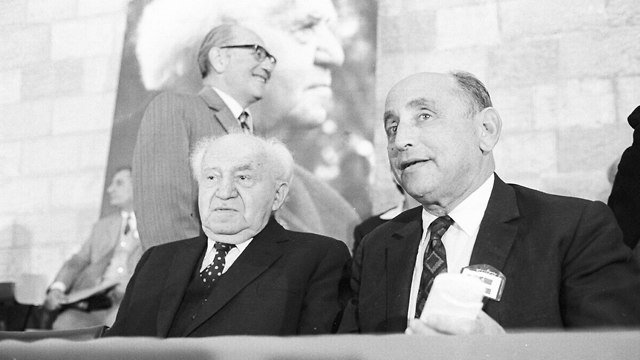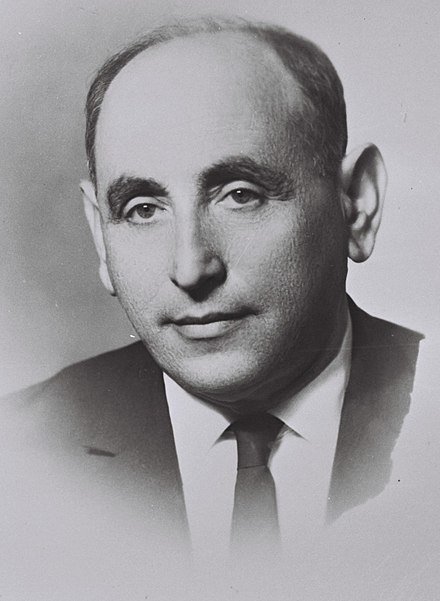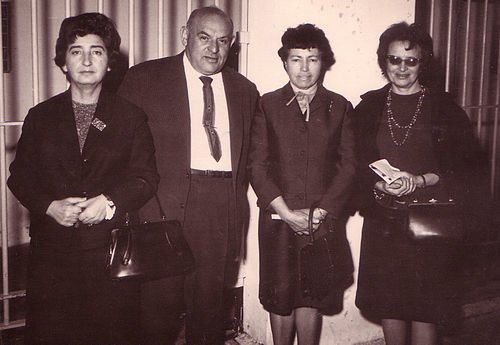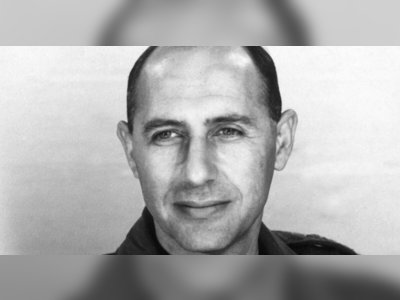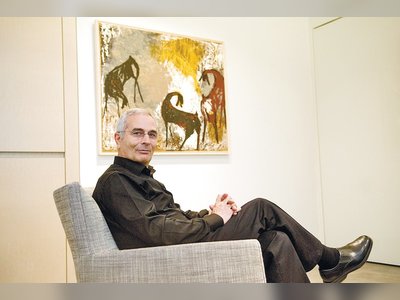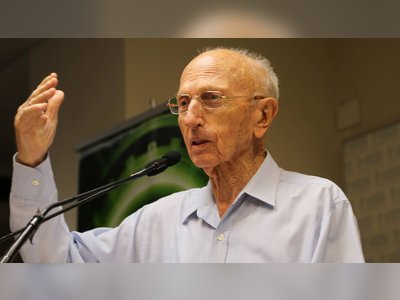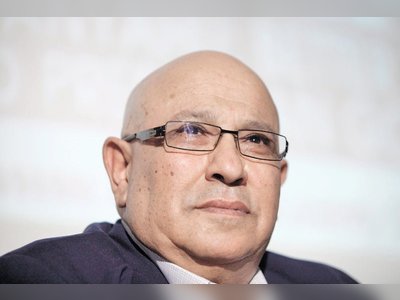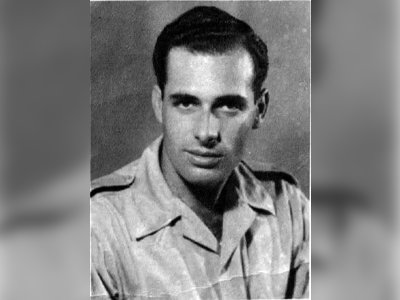Isar Har'el
Was an Israeli intelligence officer, one of the founding fathers of Israeli intelligence, the first head of the Shin Bet (Israel Security Agency), the head of the second branch of the Mossad, and a member of the Knesset.
Early Life and Youth
Isar Har'el was born as Israel Netanovich Helfrin in 1911 in the city of Vitebsk, which was then part of the Russian Empire (present-day Belarus). He was the fourth child of a Jewish family. His father, Rabbi Nathan - Netan Helfrin, was a graduate of the Volozhin Yeshiva, and his mother, Yokheved (née Levin), was a homemaker and the daughter of a wealthy local Jewish industrialist.
The exact date of his birth is unknown as it was recorded in his father's Talmudic book, which was lost during the Russian Revolution and World War I. The Helfrin family ran a vinegar factory in Vitebsk, a gift from his maternal grandfather, who owned large parts of imperial Russia's vinegar production.
When Isar Helfrin was five years old, the Russian Civil War erupted, and Vitebsk changed hands multiple times, from the White Army to the Red Army. He even attended a speech by Leon Trotsky in his city. The Soviet authorities confiscated the family's property, and they suffered from hunger.
In 1922, the family left the Soviet Union and moved to Daugavpils, Latvia, which had gained independence. On their way, Soviet soldiers looted their belongings, including what remained of their property. In Daugavpils, Har'el received a formal education, completed elementary school, and started high school.
In his autobiography, "Security and Democracy," he recounted a remarkable event that shook the entire city and was related to Rabbi Meir Simcha Hacohen, who served as the city's rabbi. One rainy winter, the local river rose dangerously close to flooding the city, and there was a serious risk that the waters would breach the dykes and inundate the city. Rabbi Meir Simcha prayed for divine mercy on the city's inhabitants. Within a short time, the waters began to recede, and the city was saved.
As he grew older, Har'el developed a Jewish national consciousness and joined a Zionist youth movement. At the age of 16, he left for training in preparation for his eventual immigration to the Land of Israel. During his training year, he worked in agriculture, aspiring to join a kibbutz.
In 1929, during the events of 1929 Palestine riots, his comrades in training decided to expedite their immigration to serve as reinforcements for the Jewish settlement. Har'el, who was 17 at the time, was provided with forged documents that stated he was 18, enabling him to receive a "certificate" (entry permit to Eretz Israel) from the British.
In early 1930, he made his way to the Land of Israel, traveling across Europe from north to south. In Genoa, he boarded a ship bound for Eretz Israel, secretly carrying a concealed firearm in a loaf of bread.
In the Land of Israel, Har'el joined the United Kibbutz Movement, which established Kibbutz Shefayim. Initially, he worked as a laborer in the fields of the Sharon region and in a packing house. During this time, he married his wife, Rivka, and brought both their families to the kibbutz. However, when he requested financial assistance from the kibbutz to repay the loans he had taken for their immigration, his request was denied.
Consequently, three families, including his own, left the kibbutz and settled in Herzliya. They lived in a communal house and earned their livelihood as agricultural laborers. Over time, Har'el found employment as a pipeline installer for irrigation in orchards, which helped alleviate their financial struggles. During their marriage, Isar and Rivka had a daughter. Despite his public responsibilities and covert activities, Har'el was a dedicated family man.
In the State's Intelligence Service
With the outbreak of World War II, Har'el realized that he could no longer pursue his livelihood while his comrades were being conscripted into the British Army or the Palmach. In 1942, he approached the "Haganah" organization in Herzliya and volunteered his services. This was during a period when the German General Erwin Rommel's forces were approaching the Land of Israel, a time known as the "Two Hundred Days of Dread."
The members of the "Haganah" believed that the defense of the homeland should take precedence at that moment. They assigned Har'el to the "Maskilim" course of the "Haganah." Upon completing the course, he was initially stationed with the British Coast Guard but primarily served in the "SHAI" - "Sherut HaYediot" (Information Service), which was the intelligence service of the "Haganah."
Har'el was transferred from his post with the Coast Guard after striking a corrupt British officer who had expressed anti-Semitic sentiments. He was reassigned to the "Sherut HaYediot" while simultaneously continuing his duties with the Coast Guard.
In 1944, Har'el was summoned to meet with David Ben-Gurion by Amiram (Zabludovsky), the commander of "SHAI," who informed him that he was assigned to serve at the headquarters of "SHAI" in Tel Aviv. Thus began Har'el's long and storied career in various command positions within the intelligence community of the nascent State of Israel.
Har'el started working at the "SHAI" headquarters in Tel Aviv at the end of 1944 as the secretary of the "Jewish Section." The head of this section was Yosef Kreib, and Har'el served as his assistant. The department's tasks included internal security and, among other things, gathering information about underground organizations that did not align with the national institutions, such as the Irgun and Lehi, as well as monitoring the activities of Jewish communists. A few months after starting as the secretary, Har'el was promoted to head the section.
In 1947, his name was brought to David Ben-Gurion's attention. Har'el briefed Ben-Gurion on the activities of his department during their meeting. In that same conversation, Ben-Gurion decided to change the name of the section from the "Jewish Section" to the "Internal Section." Har'el excelled in his role and became an unofficial spokesperson for "SHAI." He maintained fair relations with members of other underground organizations who were subject to his department's surveillance.
At the "SHAI" headquarters, Har'el was nicknamed "Little Isar," partly because of his short stature and to distinguish him from "Big Isar" - Isar Berenzon (Birenzweig), who was added to the "SHAI" headquarters in 1947. In contrast to Har'el, Birenzweig was tall. In time, Isar Berenzon would become the head of military intelligence but was later dismissed due to the Ali Kassam affair.
In 1944, Har'el was appointed as the commander of the Tel Aviv District of "SHAI," responsible for collecting intelligence in Arab Jaffa. This was a challenging period for "SHAI" due to the aftermath of the Black Saturday and the decrease in the number of Arab intelligence sources, resulting from the Arab residents of Jaffa's awakening to the impending War of Independence.
Har'el took steps to recruit new sources and succeeded in doing so. As the declaration of the state approached, Har'el dispatched an Arab agent on a mission to Oman to assess the intentions of the Jordanians and determine whether they planned to join the war. The agent reported that the Jordanians indeed intended to enter the conflict, prompting Har'el to inform Ben-Gurion.
Isar Har'el's career in the Israeli intelligence community was marked by dedication, resourcefulness, and a commitment to the security of the fledgling state. His contributions were vital during a period of great uncertainty and peril, and his legacy endures as a foundational figure in Israel's intelligence history.
- איסר הראל – ויקיפדיהhe.wikipedia.org
